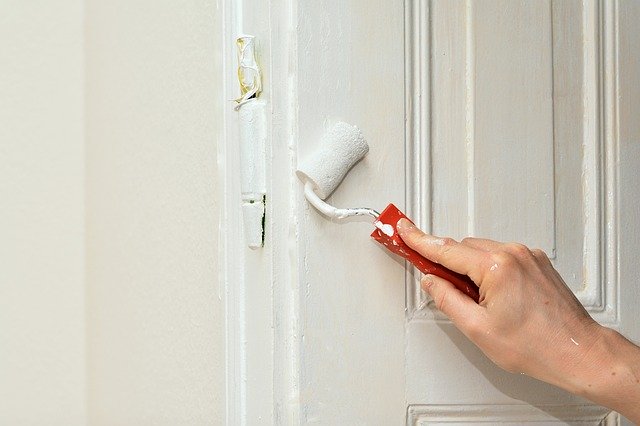Drywall Taping – hand tools is a comprehensive list of tools needed for drywall repair/installation. This article is an excerpt form workbook called “Drywall Taping” by “California State Department of Education“. Added here for the benefit of our users.
HAND TOOLS
This topic, “Hand Tools”, is planned to provide answers to the following questions:
- What drywall installation hand tools should the taper have?
- What taping and finishing hand tools should the taper have?
- What do the different hand tools look like?
- What is the purpose of each tool?
The apprentice taper’s personal possession of suitably designed and professional quality hand tools is critically important. Having the proper tools and developing an almost “second nature” familiarity with their use will enable the taper to become an efficient and capable craftsman.
Drywall Installation Hand Tools
The drywall taper, although not directly involved in the installation of drywall panels in the building structure, will find it useful to include in his tool kit some of the basic drywall installation hand tools. There will be instances when these tools will be needed in order for the taper to complete his phase of drywall construction. The following are descriptions of the few drywall installation hand tools that a taper would be prudent to have.
Flexible Steel Tape
An 8, 10, or 12 foot steel rule is usually fitted with sliding tip to compensate for tip thickness in taking accurate inside or outside measurements. This tool will fulfill most of the taper’s measuring requirements.
Trimming Knife
The trimming knife consists of a metal handle with razor sharp changeable blades. It is used for scoring and cutting drywall panels and is also useful for opening cartons, slitting tape, and other trimming and shaping requirements. CAUTION: This tool will cut; use it and store it carefully K.
Rasp
A rasp is handy on the job for trimming and smoothing cut ends and rough edges of gypsum wallboard panels. View “a” depicts the standard heavy rasp obtainable in any hardware store. View “b” shows an effective utilitarian rasp which may be quickly made on the job by bending over and stapling a section of metal lath to a scrap piece of 2X4.
Utility Saw or Keyhole Saw
Utility saws or keyhole saws are useful for cutting small openings (trimming around junction boxes, for example) and for making various angle cuts in gypsum wallboard.
Wallboard Hammer
The wallboard hammer has a slightly convex face and is designed to seat nails and compress wallboard to leave a perfect “dimple”.
Nail Container
The nail container can be a leather pouch, canvas bag, or an apron; anything that will keep an assortment of nails and screws separated, handy, and in one place.
Standard and Phillips-head Screwdrivers
The drywall taper’s tool kit should include a standard screwdriver for general utility purposes and a crosshead or “Phillips” screwdriver for seating the crosshead screws sometimes used for installing gypsum wallboard to wood or metal framing.
If the tools just described are readily accessible when they are needed, they will save the taper time and effort. The contractor will also benefit in time, money, and conserved man hours.
Drywall Taping Hand Tools
Many varieties of hand tools are available for use in drywall taping; some are old and some have just recently been developed. They come in many sizes and shapes and have general and special uses. However, two facts remain unchanged: these tools are designed for the hand finishing of drywall installations, and they are only as effective or efficient as the hands that use them. The skill and ultimate perfection must come from the user.
The following is a list of drywall hand finishing tools: (The list is not intended to be all inclusive. A further understanding of available hand tools will be acquired by reviewing the references at the end of this topic).
Mixing Container
For mixing drywall taping and texturing compounds a five-gallon bucket, metal or plastic, has been found to be quite adequate. More than one is usually needed, depending on which step in the finishing process is being worked.
Mixing or Stirring Devices
“Mud beaters” may vary from a stick paddle picked up from wood scrap on the job to a heavy restaurant-type potato masher. A potato masher of the kind illustrated is ideally suited to mixing, beating, and de-lumping the various compounds used in the taping and finishing of a drywall installation. A variety of electrical mixers are also available. These will be discussed in Topic 2.
Joint Compound
Joint compound holders come in many sizes and have varying features. More commonly referred to as “mud pans, these tools contain the drywall compounds while in transit from the mixing container to the working surface. Some mud pans are fitted with a replaceable stainless steel edge to withstand the constant abrasion from scraping of the broad knife. Use of a “hawk” is popular in some areas of the United States for carrying mud from mix to work.
Mud Spreaders or Broad Knives
Broad knives, the most constantly used tool of the taper, come in many shapes and sizes. The width of the blade becomes a matter of preference with the applicator. Basically, broad knives, or mud spreaders, consist of metal or plastic blades fitted with wood, plastic, metal, or aluminum tube handles. Some tapers prefer to use a trowel rather than a broad knife. CAUTION: Broad knife blades can, with prolonged use, become very sharp.
Continue reading about Drywall Handling

